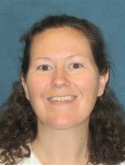Utilizing a patient advocacy-led clinical network to engage diverse, community-based sites in implementation-effectiveness research Journal Article
| Authors: | Ciupek, A.; Chichester, L. A.; Acharya, R.; Schofield, E.; Criswell, A.; Shelley, D.; King, J. C.; Ostroff, J. S. |
| Article Title: | Utilizing a patient advocacy-led clinical network to engage diverse, community-based sites in implementation-effectiveness research |
| Abstract: | Background: Increased engagement with community-based practices is a promising strategy for increasing clinical trials access of diverse patient populations. In this study we assessed the ability to utilize a patient-advocacy organization led clinical network to engage diverse practices as field sites for clinical research. Methods: GO2 for Lung Cancer led recruitment efforts of 17 field sites from their Centers of Excellence in Lung Cancer Screening Network for participation in an implementation-effectiveness trial focused on smoking cessation integration into screening programs for lung cancer. Sites were engaged by one of three methods: 1) Pre-Grant submission of letters of support, 2) a non-targeted study information dissemination campaign to network members, and 3) proactive, targeted outreach to specific centers informed by previously submitted network member data. Detailed self-reported information on barriers to participation was collected from centers that declined to join the study. Results: Of 17 total field sites, 16 were recruited via the targeted outreach campaign and 1 via pre-grant letter of support submission. The sites covered 13 states and 4 United States geographic regions, were varied in annual screening volumes and years of screening program experience and were predominantly community-based practices (10 of 17 sites). The most reported reason (by 33% of sites) for declining to participate as a field site was inadequate staffing bandwidth for trial activities. This was especially true in community-based programs among which it was reported by 45% as a reason for declining. Conclusions: Our results suggest that this model of field site recruitment leveraging an existing partnership between an academic research team and an informal clinical network maintained by a disease-specific patient advocacy organization can result in engagement of diverse, community-based field sites. Additionally, reported barriers to participation by sites indicate that solutions centered around providing additional resources to enable greater capacity for site staff may increase community-practice participation in research. © The Author(s) 2024. |
| Keywords: | patient selection; united states; organization and management; lung neoplasms; smoking cessation; lung tumor; early detection of cancer; clinical trials; community care; community networks; procedures; patient advocacy; cancer; humans; human; early cancer diagnosis; field sites |
| Journal Title: | BMC Health Services Research |
| Volume: | 24 |
| ISSN: | 1472-6963 |
| Publisher: | BioMed Central Ltd. |
| Date Published: | 2024-08-05 |
| Start Page: | 891 |
| Language: | English |
| DOI: | 10.1186/s12913-024-11376-3 |
| PUBMED: | 39103790 |
| PROVIDER: | scopus |
| PMCID: | PMC11299353 |
| DOI/URL: | |
| Notes: | Article -- MSK Cancer Center Support Grant (P30 CA008748) acknowledged in PDF -- Source: Scopus |
Altmetric
Citation Impact
BMJ Impact Analytics
MSK Authors
Related MSK Work






